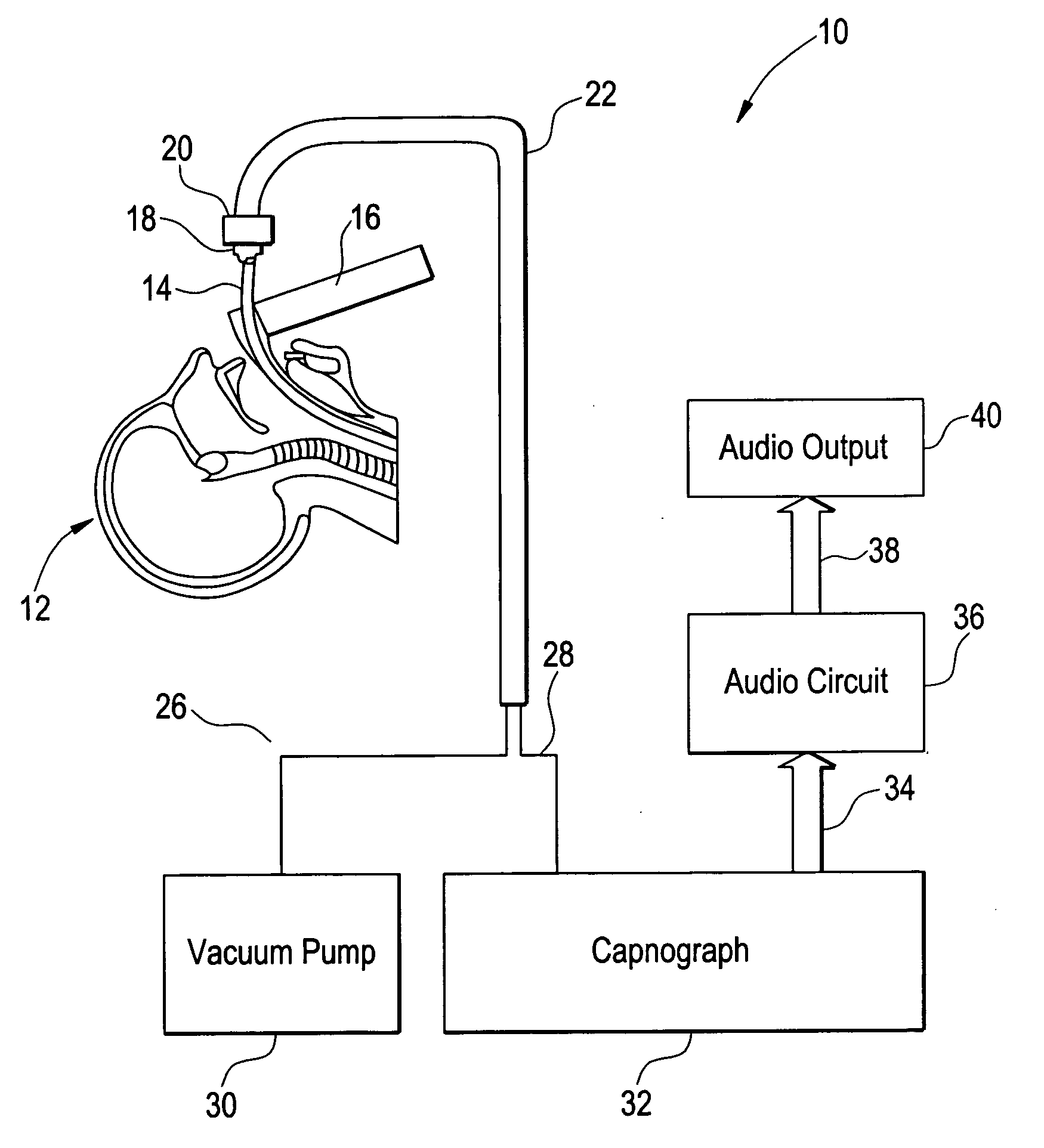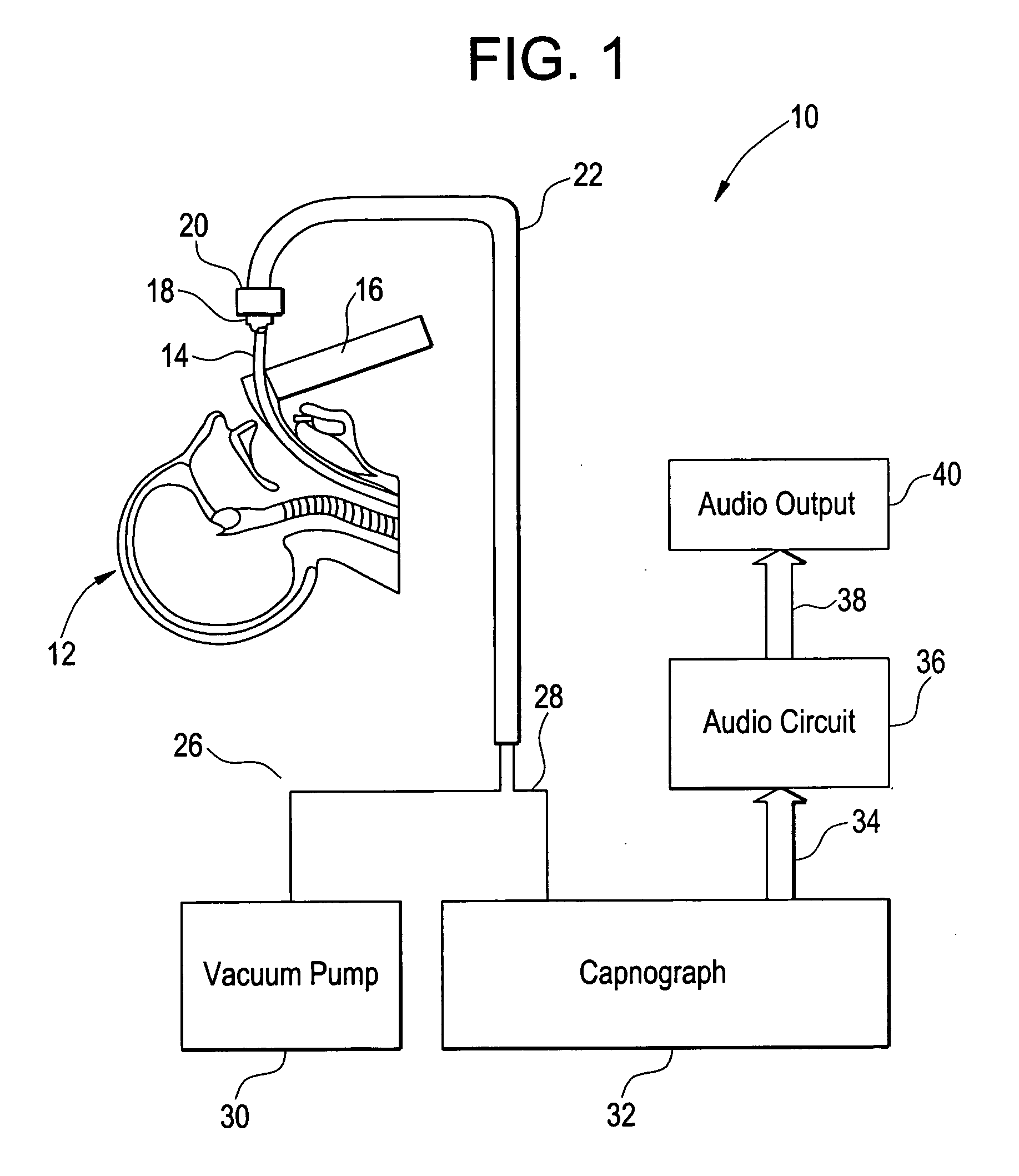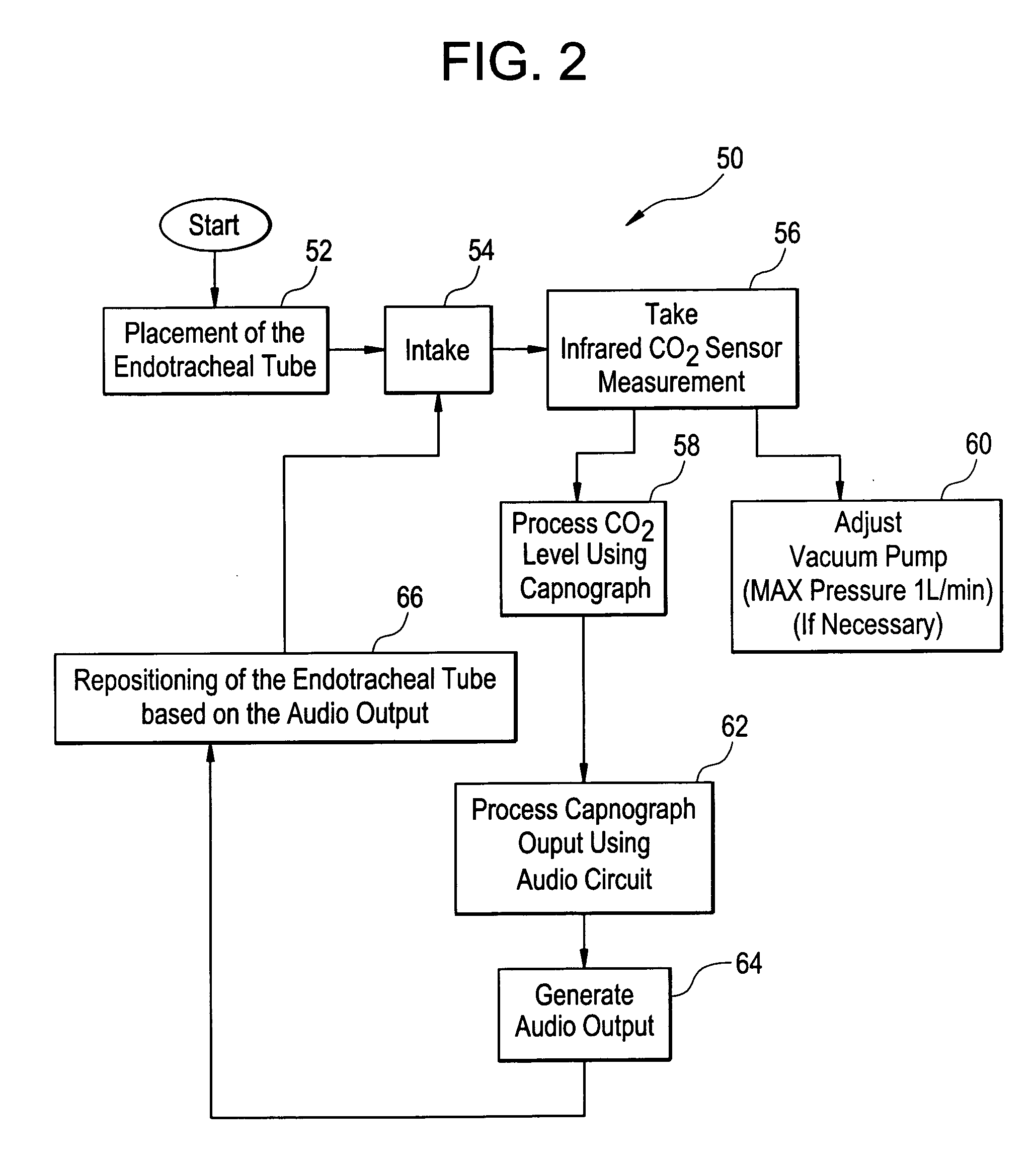Method and apparatus for capnography-guided intubation
- Summary
- Abstract
- Description
- Claims
- Application Information
AI Technical Summary
Benefits of technology
Problems solved by technology
Method used
Image
Examples
Embodiment Construction
[0036]The present invention relates to a method and apparatus for capnography-guided intubation. The present invention is operable with any suitable endotracheal tube or stylet, and includes a carbon dioxide sensor, a vacuum source for drawing air from the patient's lungs and past the carbon dioxide sensor, a capnograph, and an auxiliary sensor such as an audio circuit and associated audio output device. A sensory signal, such as an omnidirectional visual display or light, a vibratory signal, or an audible signal, is generated during intubation of a patient to provide an audible indication of carbon dioxide levels, so as to facilitate proper placement of an intubation tube. In the case of the audible signal, the frequency (pitch) corresponds to measured carbon dioxide levels, thereby providing a simple, easy-to-interpret, indication of the current position of an endotracheal tube during intubation, as well as confirmation of proper placement of the tube.
[0037]FIG. 1 is a diagram sho...
PUM
 Login to View More
Login to View More Abstract
Description
Claims
Application Information
 Login to View More
Login to View More - R&D
- Intellectual Property
- Life Sciences
- Materials
- Tech Scout
- Unparalleled Data Quality
- Higher Quality Content
- 60% Fewer Hallucinations
Browse by: Latest US Patents, China's latest patents, Technical Efficacy Thesaurus, Application Domain, Technology Topic, Popular Technical Reports.
© 2025 PatSnap. All rights reserved.Legal|Privacy policy|Modern Slavery Act Transparency Statement|Sitemap|About US| Contact US: help@patsnap.com



